Memberships & Publications
To fight the climate change, hydrogen plays an important role as a transportable carrier of energy. However, in order to make the turnaround happen, a lot of challenges need to be taggled and solved, beginning with producing the amount of hydrogen needed to fulfill the energy demand.

Memberships
Today, most electrolytic hydrogen is produced via Alkaline Electrolysis. However, one single technology will not be sufficient to cover the complete demand. All technologies need to be employed in the best possible way. That is why Proton Exchange Membrane (PEM) electrolysis will play a particularly important role, especially in terms of production of Green Hydrogen. It is best suited to convert the fluctuating energy output of renewable energies, such as solar, hydro and wind energy.
For the mentioned PEM electrolysis precious metals are required – some of them being very scarce, like iridium – and they will be needed in significant quantities. Also, sequential processes like the purification of hydrogen, or the conversion into other forms for easier storage and transport, require precious metals.
Thus, precious metals are indispensable for the Hydrogen Revolution, and therefore the hydrogen ramp-up requires a raw material strategy. This strategy needs to cover three important aspects:
- Innovations to maximize the hydrogen output with the available raw materials or cover them with high performance alternatives, such as the Heraeus low-iridium materials
- Strategies to secure the supply with scarce materials like iridium and to manage the specific challenges like high price volatility with advanced precious metals trading services
- Additional capacities and workflows for the recycling of end-of-life materials to recover precious metals to establish a sustainable raw materials loop.
As a precious metals specialist, Heraeus is a skilled partner with high expertise in all necessary fields and has been investing significantly in R&D and hydrogen recycling. What is more, we are actively engaging in the Hydrogen Community, contributing to make the Hydrogen Revolution happen.
Heraeus is a member of various organizations that engage themselves in the Hydrogen economy, among others in the Hydrogen Council, Global Energy Solutions, Hydrogen Europe, Ammonia Energy Association, European Clean Hydrogen Alliance and The Fuel Cell and Hydrogen Energy Association (FCHEA).
As well, we are actively taking part in several projects to accelerate the development of solutions that enable the hydrogen ramp up.
Project length: 01.04.2021 - 31.03.2025
Demonstration of the large-scale feasibility of PEM EL technology through the significant reduction of the Ir content with simultaneous highly efficient and long-lasting operation in respective MEA concepts.
Completed Projects
Project Duration: 01.06.2019 - 21.12.2022
Development of a scalable production technology for catalyst coated membranes and membrane electrode assemblies based on robust and high volume producable electrocatalysts, which fulfil the requirements of automotive mass market.
Recommended publications
You are interested in deep-diving into Hydrogen related topics? We recommend the following publications.
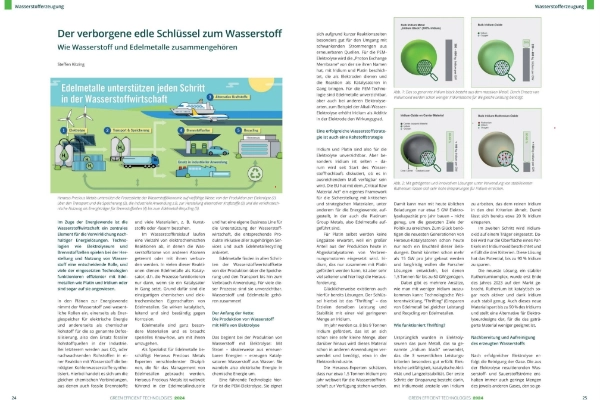
The Hidden, Precious Key to Hydrogen: Why Hydrogen and Precious Metals Belong Together

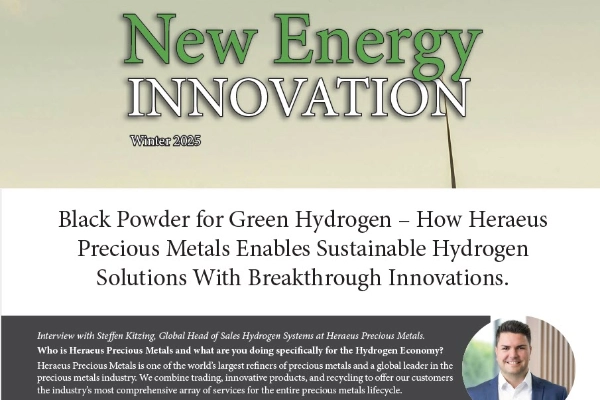
Steffen Kitzing in Interview: Black Powder for Green Hydrogen – How Heraeus Precious Metals Enables Sustainable Hydrogen Solutions With Breakthrough Innovations.
|
Published |
Title |
Topic |
Author |
|---|---|---|---|
| Jan 2025 | Electrolyser Partnership input for the Clean Industrial Deal |
Call to Actions for Hydrogen in Europe |
European Clean Hydrogen Alliance |
| Oct 2024 | Global Hydrogen Review 2024 | Comparison H2 and applications | IEA |
| Sep 2024 | Hydrogen Insights 2024 | state of the global hydrogen economy | Hydrogen Council (McK) |
| Jan 2024 | Länderanalyse 2023 – Internationale Wasserstoff-Strategien im Vergleich (country analysis 2023 – international strategies for hydrogen in comparision) | Country roadmaps, transportation routes, costs |
Wasserstoff-Kompass DECHEMA, acatech |
| Aug 2023 | Site-specific, comparative analysis for suitable Power-to-X pathways and products in developing and emerging countries | Power-to-X comparison, Energy Input sources, costs of products and plants, global view and global transport ways | Fraunhofer ISE, H2Global Stiftung |
| Aug 2023 | A Comparative Study on the Activity and Stability of Iridium-Based Co-Catalysts for Cell Reversal Tolerant PEMFC Anodes | Material innovation for PEM fuel cells | Robert Maric et al 2023 J. Electrochem. Soc. |
| Jul 2023 | Fortschreibung der Nationalen Wasserstoffstrategie (Continuation of the National Hydrogen Strategy) | National Hydrogen Strategy Germany | Federal Ministry for Education and Research, Germany |
| Mar 2023 | Supply chain analysis and material demand forecast in strategic technologies and sectors in the EU – A foresight study | Raw materials and supply chain | Joint Research Centre, EUC |
| Feb 2023 | Preiselastische Wasserstoffnachfrage in Deutschland – Methodik und Ergebnisse (Price-elastic hydrogen demand in Germany - Methodology and results) | Market Potential of Green Hydrogen | HYPAT / Fraunhofer ISI |
| Dec 2022 | Sufficiency, sustainability and circularity of critical materials for clean hydrogen | Critical Raw Materials for Hydrogen | World Bank / Hydrogen Council |
| Jan 2022 | Mineralische Rohstoffe für die Wasserelektrolyse – Themenheft (Mineral raw materials for water electrolysis) | Availability of critical raw materials | DERA |
| Jan 2022 | Geopolitics of the Energy Transformation - The Hydrogen Factor | Geopolitical Role of H2 | IRENA |
| Nov 2021 | Hydrogen Net-Zero - A critical cost-competitive energy vector | H2 Economy Scale Up | HydrogenCouncil (McK) |
| Okt 2021 | Cost forecast for low temperature electrolysis – technology driven bottom-up prognosis for PEM and alkaline water electrolysis systems | Tech-open comparison PEM vs. Alkaline | Clean Air Task Force (FH ISE) |
| Sep 2021 | Roadmap towards zero emissions - The complementary role of BEVs and FCEVs | BEVS and FCEVs not or | HydrogenCouncil (McK) |
| Jan 2021 | Hydrogen Decarbonization Pathways | Hydrogen and Decarbonization | HydrogenCouncil (McK) |
Read as well
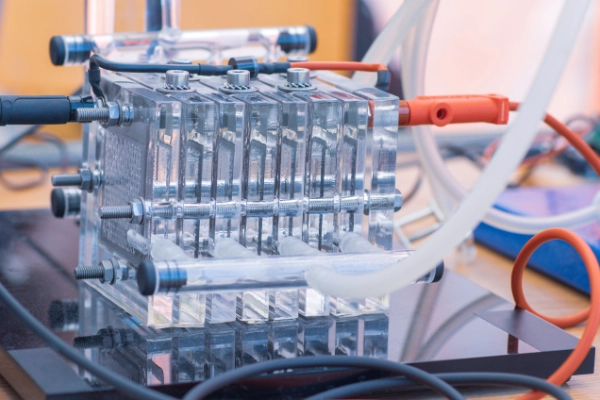
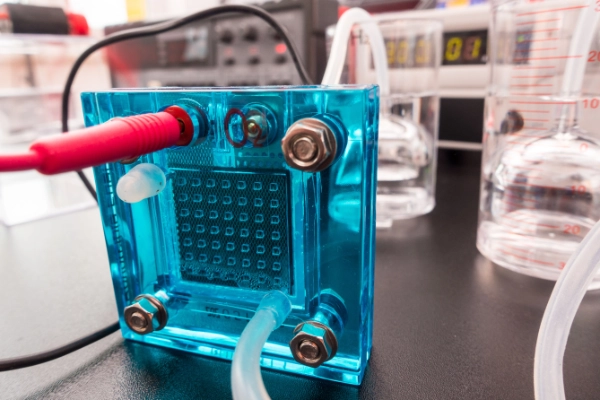
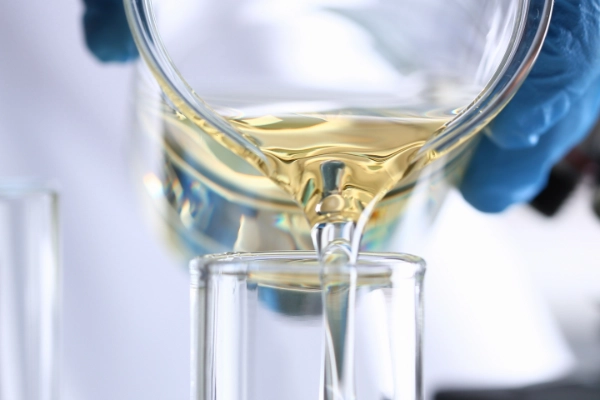

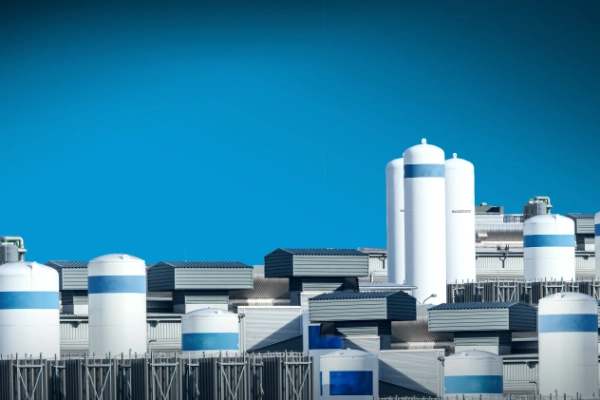
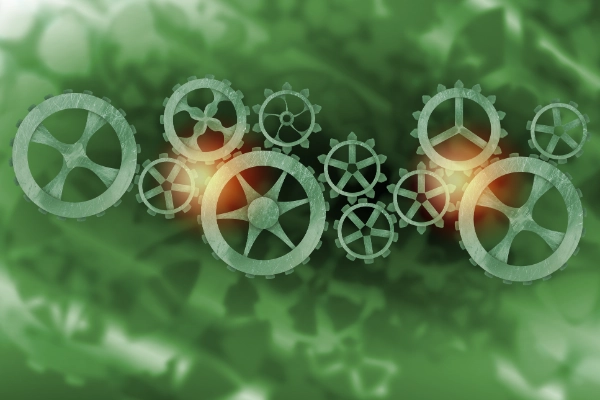
Your Contact for Hydrogen Memberships & Publications
